We are reader supported. When you purchase through links on our site, we may earn an affiliate commission. Also, as an Amazon affiliate, we earn from qualifying purchases.
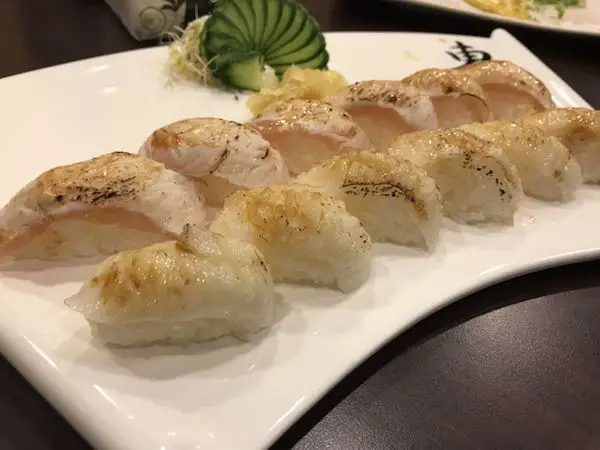
Nigiri, short for nigirizushi, often called as nigiri sushi, is a palatable ball of sweet sushi rice topped with thinly sliced raw fish that glistens like a precious jewel and sits like a crown! You can find this popular Japanese delicacy in sushi restaurants around the world.
In the Japanese culture, any food that includes vinegared rice is known as sushi. The biggest difference between nigiri sushi and other types of maki sushi is that the later is wrapped in Nori (seaweed) while the former is not. Furthermore, nigiri has fish on the top while maki has fish inside the roll.
If you are new to eating raw fish and find sashimi intimidating, nigiri sushi gives you a good start. The vinegared rice balances the flavor of raw fish to let your taste buds acclimatize to the unique taste. In this article, I will tell you all you need to know about nigiri, including expert advice, tips, recipes, and traditions.
Contents
What Is Nigiri Sushi or Nigirizushi?
Nigiri is a Japanese word that means ‘two fingers’ in English (ni = two, giri = fingers). Does that make you wonder why it’s called so? It derives its name from the way the ball of vinegared rice is prepared to comfortably fit into the chef’s two fingers while giving it the perfect oval shape.
While sushi comes in several forms ranging from cone-shaped temaki rolls to cylinder-shaped makizushi rolls, nigiri is a ball of pressed rice or shari topped with a slice of fish (neta) or seafood. Today you can find sushi everywhere from upscale restaurants to bento boxes.
This type of sushi traces its origins from the Edo dynasty, which is now called Tokyo. In Japan, nigiri is still often referred to as Edo-Mae referring to its place where it was born. Although nigiri originated from the Edo dynasty, history has its roots embedded in the 4th century BC when people used fermented rice to preserve fish to eat it later.
When it was time to eat the fish, the rice was discarded and only fish was eaten. As time passed by, people discovered an easier and quicker way to ferment fish using vinegar. The fermented rice did not rot anymore and actually tasted good with raw fish, and a new tradition was born.
Who Popularized Nigiri Sushi?
Fast forward to Edo or Tokyo in 1824 when a man named Hanaya Yohei started the first sushi shop in the Ryogoku district, situated close to the Sumida River. It was a busy area with a lot of traffic and he was able to get fresh fish from the river.
Yohei had an entrepreneur’s mind and he decided to use the latest method to ferment rice using vinegar and salt in a matter of minutes. Luckily for him, fresh raw fish was easily available from the bay. He took a small ball of vinegared rice and pressed it on his palm to make an oblong shape. He topped the rice with a slice of fresh fish and sold them like hot cakes to the pedestrians.
This turned out to be a new chapter or milestone in Sushi history. It brought raw fish to the forefront and people started appreciating its taste more than fermented fish, and very soon it became a popular method for making sushi. Today, it is difficult to believe that seasoned rice, which is an essential part of sushi was thrown away in the past.
What started in a small sushi stall in Edo soon turned into a rage and its popularity spread throughout Japan and to the rest of the world. Today you can walk into any sushi restaurant in any part of the world and you will find nigiri sushi on the menu.
What Are The Typical Ingredients Found In Nigiri Sushi
Nigiri sushi should not be confused with sashimi, which is technically not sushi, because it does not contain sushi rice. Sashimi refers to thin slices of extremely fresh raw fish or other seafood, often served over shredded daikon radish. We will discuss the differences in detail later in this article.
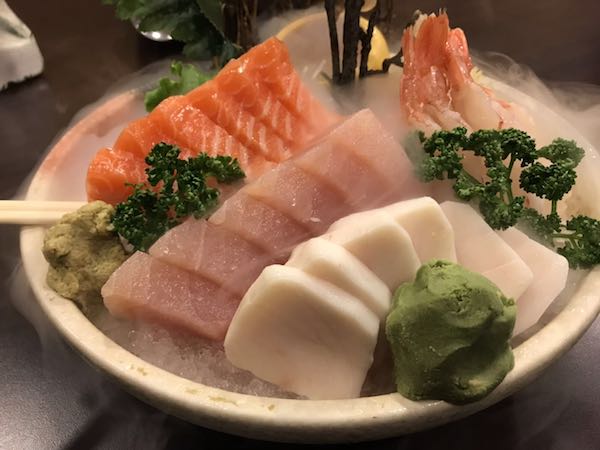
For now, please bear in mind that nigiri sushi is different from sashimi as it contains a slice of fresh raw fish press over a ball of seasoned sushi rice. The typical ingredients are sushi rice (seasoned with vinegar, salt, and sugar) and raw fish.
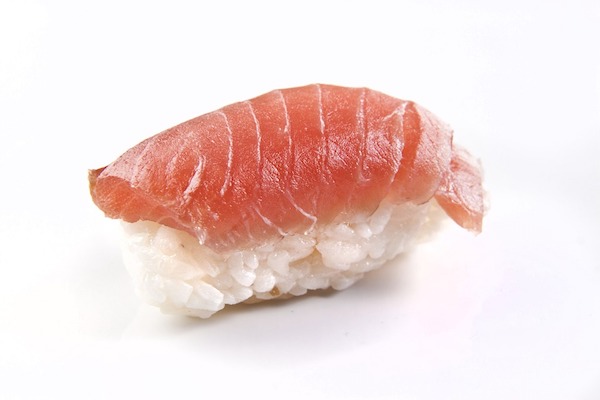
The topping in nigiri mostly comprises of fresh fish and seafood like octopus, shrimp, and squid. It rarely contains meat or other non-fish items (Wagyu beef and tamagoyaki are non-traditional options that I will tell you in detail below.)
The sushi chef may sometimes place a dab of wasabi over the hand-pressed sushi rice, just beneath the raw fish slice. The bite-sized portions are served with wasabi, soy sauce, and pickled ginger.
Related Article: 38 Sushi Topping Ideas For Rolls And Nigiri
Steps To Prepare Nigiri Sushi At Home
Step 1:
First, you need to prepare sushi rice from short grain Japanese rice and then season it with vinegar, salt, and sugar. You are lucky because I know where you can find the best recipe for making restaurant-style sushi rice in cooker or pot, just click here.
Step 2:
Next, choose one of the traditional or non-traditional toppings mentioned below to compliment the rice ball. If you live close to the sea or you know a trusted vendor that sells sushi-grade fresh fish, go for it. If not, you may still enjoy nigiri with imitation crabsticks or cooked/ grilled meat.
Related Article: Different Ways On How To Tell If Sushi Is Fresh
Step 3:
If you are slicing tuna for nigiri topping, take a sharp Japanese knife, moisten it with water, and make a straight cut( click to see my favorite Japanese knife) at a 45 degrees angle. If you want to use salmon slices, you will need to cut out 1/8 inch thick slices at 45-degree angle. (For all other toppings make sure the slices are 1/8 inch thick and big enough to hug the ball of rice).
Step 4:
If you are throwing a nigiri party at home, I would suggest that you make slices of the topping(s) and put them on a plate. Cover the toppings with a saran wrap and keep the plate inside a refrigerator until you are ready to use them.
Step 5:
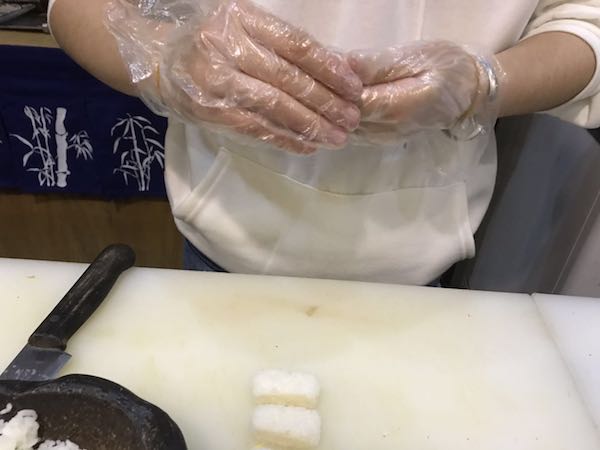
You have two choices when it comes to assembling the nigiri sushi. You may prepare shari balls, as many needed, and cover them with a damp paper towel or vinegared towel to retain moisture. When you are done making all, place the toppings and shape them by pressing with your fingers.
Or,
You may keep sushi rice bowl on your left and the tray containing fish slices on your right with vinegar water to wet your fingers while handling rice. This way you will make one complete piece at a time. I prefer the second method unless I have to make hundreds of nigiri for a big party!
How To Give Perfect Shape To Sushi Rice In Nigiri
- Make vinegared water by mixing 1/4 cup of rice vinegar with 1 cup of water to prevent rice from sticking on your fingers.
- Dip your fingers in the solution and rub against a damp towel to remove excess water.
- Take a golf ball size of seasoned sushi rice in your right hand (make sure the sushi rice is in room temperature – not hot, not cold)
- Press the rice ball to give it a slender oval shape, about 1-inch wide and 2-inches long.
- You must use your palm and fingers of the left hand, applying just enough pressure for the rice and fish slices to stick together to form a compact shape.
- Take the fish or seafood slice on the right hand and swipe a little wasabi on the side that will sit over the rice.
- Put oval rice log over the topping, pressing gently using your thumb and middle finger to form a rounded rectangle shape. Press your left-hand thumb on the midsection of the rice log to form a slight depression.
- Flip the nigiri so that the fish slice is on the top, pressing down slightly with your thumb on both sides to ensure that the topping hugs the rice.
- Put the finished piece on the plate and start all over again until you use all toppings. Serve with soy sauce.
What Are The Different Types Of Nigiri Toppings?
Nigiri sushi comes in different varieties based on the type of fish toppings used while making it. If you are starting out with raw fish, I would recommend that you try the subtle versions such as salmon (Sake), yellowtail (Hamachi), halibut (Hirame), tuna (Maguro), cooked shrimp (Ebi), and freshwater eel (Unagi).
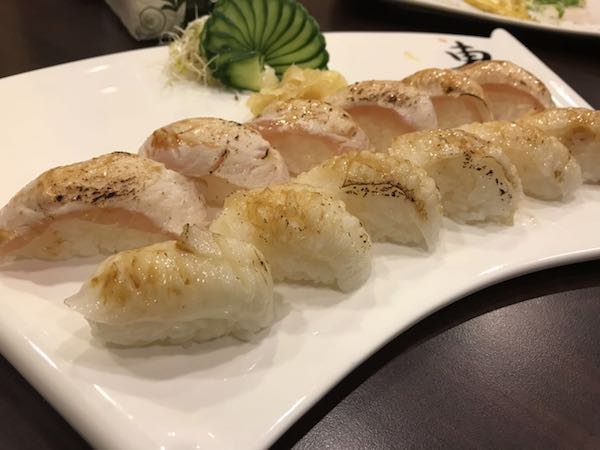
Once you develop your palate and start liking the taste of raw fish, you can proceed to try other toppings such as crab (Kani), octopus (Tako), Squid (Ika), salmon roe (Ikura), and abalone (Awagi). They are known to have strong flavors and take time to get used to. To give you an exhaustive insight about nigiri toppings, I have listed down the most common ones below:
Traditional Nigiri Sushi Toppings You Will Love To Try!
Maguro (tuna):
Often referred to as akami, maguro is the part of bluefin tuna that has an intense reddish-purple hue. As the fish grows up to 3 meters in length, the flavor and texture vary widely depending upon the area from where the flesh is taken. Akami is lean and has a faint meaty flavor that sets it apart from others.
Chu-toro:
This piece is cut from the middle belly section of the tuna fish. It is extremely rich and has a high-fat content. The topping has a creamy texture and tastes great when paired with the vinegared ball of sushi rice.
O-toro:
Also known as the extra-fatty area of tuna fish, this piece is taken from the front part of the belly. It is known for its marble-like appearance, soft texture, and buttery flavor. This is a popular nigiri topping that is often served in aburi-style and maybe blow-torched to make it smoky and meaty in flavor.
Toro Salmon:
The toro of salmon fish refers to the fatty stomach part, which is so soft that it melts into the mouth. Toro is a Japanese word that means ‘melt’. This particular slice of fish is extremely rich and loaded with fat. It is served raw or grilled at times to give it a tender texture.
Sawara (Spanish mackerel):
As the top-end mackerel found in Japan, Sawara is an extremely popular nigiri topping. It is known for its white color, subtle meaty flavor, and opaque appearance. It may be used as a raw nigiri topping or grilled to make it slightly tender and sprinkled with salt to balance the rich taste.
Aji (horse mackerel):
Coming from the family of mackerel, aji has a high content of omega 3 fat. It sports a mild and sweet flavor with a slightly pink color that looks fantastic when topped on the rice ball. As one of the healthiest species of fish, it is mostly served raw but it can also be treated with vinegar and salt to enhance the taste.
Shime-saba: This is the Japanese term for marinated mackerel, which is one of the widely consumed fish species. It is found in abundance and costs significantly less. It is known to have a high content of omega3 fatty acid. As the fish ages quickly, it is often pickled with vinegar and salt to retain its flavor.
Iwashi (sardine):
Sardines are known to have a strong pungent flavor that comes from its canned and cooked versions. However, you will be surprised to find that the raw and freshly caught sardines have a sweet and oily flavor. Although this is a low-grade neta variety, it is popular for its delicious taste and health benefits. Nigiri sushi with sardine topping is always served with pickled ginger to offset the oiliness.
Kampachi (yellowtail):
The yellowtail fish is called kampachi when it achieves mid-maturity. This is a type of seasonal fish caught along the Central and South coast of Honshu from summer to autumn period. Raw and thin slices of kampachi have an elegant cream color with pink edges. The flavor is clean, mild, and sweet.
Buri (yellowtail):
The fully mature or adult form of yellowtail fish is called Buri, and both kampachi and buri duo are often known as the luxury fish. When raw, buri has a dense and rich flavor that perfectly pairs with sushi rice. The best time to eat raw buri is from December to February when the flesh turns pink due to the accumulation of fat.
Salmon:
While salmon was not used as a traditional topping in the past, it is considered one of the most popular options in the present day. It is characterized by its soft texture, mild and creamy flavor that makes it a perfect companion with sushi rice, wasabi, and soy sauce.
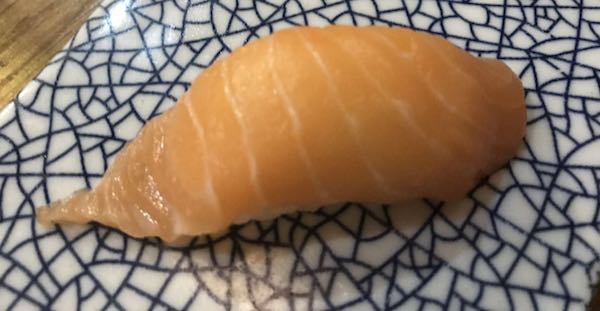
Sanma:
This is the Japanese name for Pacific saury, an autumn specialty found in Japan. It has a strong flavor when raw and becomes extra succulent when served in aburi-style. The rich and fatty taste of sanma perfectly complements the delicious ball of vinegared rice.
Katsuo (bonito):
This is one of the oldest styles of sushi toppings and it has been like that since the Edo time. The fish sports an intense red-purple colored flesh with an intense flavor. An interesting fact about bonito is that it tastes leaner in spring and has a rich and fatty texture in winter. When the fattier version is used in nigiri, it is often topped with negi and ginger to balance the extra rich flavor.
Kohada (gizzard shad):
Similar to aji, sanma, and iwashi, kohada is another glittery silverfish used as a popular topping in nigiri sushi. The kohada fillets are designed in decorative styles to make the dish more appealing. Due to its strong flavor, the fish is often marinated in vinegar and salt to balance its raw taste.
Engawa (flatfish fin):
The topping comes from the edge part of the flatfish fin. Pure white in appearance, thin slices of engawa has a soft and slightly chewy texture. The rich and buttery flesh melts inside the mouth and feels heavenly with rice. It is usually served raw but sometimes it may be flavored with soy sauce and salt.
Tai (sea bream):
This fish topping sports a pinkish-white hue and tender flesh. The sweet and delicate taste perfectly complements the vinegared rice and makes a winning combo. Other than being high in vitamin B and low in fat content, Tai is also auspicious to eat.
Non-traditional Nigiri Sushi Toppings You Must Try!
Tako (octopus):
Raw octopus has a bland taste so it is blanched and often seasoned to perk up the flavors. Although Nori is not traditionally used in nigirizushi, you may often find thin slices of octopus legs topped over
Ika (squid):
While there are many varieties of squid found in Japan, the most popular is
Geso (yari ika):
This refers to the legs part of yari ika or cuttlefish. It is a popular nigiri topping that is placed decoratively over a ball of seasoned sushi rice. It may be served raw, or grilled using a blowtorch and seasoned with citrus dressing.
Uni (sea urchin):
It is one of the treasures of the sea served as a major delicacy in Japan. The buttery taste, creamy texture, and oceanic flavor make it extremely popular. Uni is basically the reproductive organ of sea urchin. It has a bright orange color and sports a tongue-like shape. Uni nigiri sushi may be topped with a dash of wasabi to balance the rich taste.
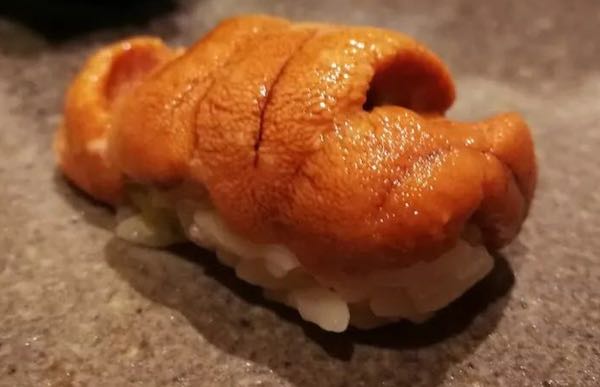
Hotate (scallops):
Although fish is the traditional topping used in nigiri, non-traditional varieties like scallops are also popular. They have smooth flesh and sweet flavor that beautifully complement the delicious sushi rice. To prepare scallops for toppings, you need to slice the scallop from the middle section to make a butterfly shape and then press it on the rice. It tastes great with citrus dressing.
Anago (saltwater eel):
Similar to unagi in various aspects, anago differs slightly in terms of flavor. While unagi has a bold and rich taste, anago is soft and subtle. The fluffy texture makes it a popular topping in nigiri sushi and the fillets are usually brushed with tare sauce before serving.
Unagi (freshwater eel):
Although slightly slimy to touch, unagi has a rich and bold taste that compliments seasoned sushi rice. To prepare unagi for nigiri, it is often grilled with soy sauce and salt to mask the pungent taste.
Kazunoko (herring roe):
This type of roe is pickled in salt and then left in the sun to dry. The sharp flavor and crunchy texture make it an amazing topping. It is usually attached to the
Ebi (prawns):
Ebi come in different varieties and serve as a fantastic topping for nigiri. Most popular of the lot are the large and fleshy kuruma-ebi, fatty and delicious botan-ebi, translucent and sweet ama-ebi. The skin is peeled off and the tail is left on the rear end for presentation. While many ebo are served raw, kuruma-ebo may be boiled to make them tender.
Hokkigai (surf clam):
This is popular seafood with a distinct appearance and taste. It has a fin-shaped design and bright colors ranging from peach to bright pink. The mild and subtle flavor makes it a delicious topping for nigiri.
Tamagoyaki:
Don’t let the name scare you! It is the thick Japanese rolled omelet made with several eggs and sliced to use as toppings. You can put them on the top of a ball of rice and fasten with a Nori strip. Unlike Western omelets, tamagoyaki uses soy, mirin, and dashi instead of milk or cream.
Wagyu beef:
This is a non-traditional nigiri topping but popular nevertheless. Thin slices of Wagyu beef are like fatty slabs of meat with a sweet and savory flavor.
Try as many different types of nigiri toppings as you can to delight your family and friends! Now that you know what toppings you can possibly use in this delicacy, here’s a quick guide on how to shape the rice for nigiri sushi.
What’s The Correct Way To Eat Nigiri Sushi
The traditional nigirizushi is bite-sized and usually eaten with fingers, although some people prefer eating it with chopsticks. If you find it difficult to use chopsticks, please feel free to use your hands as it is more convenient to eat this way.
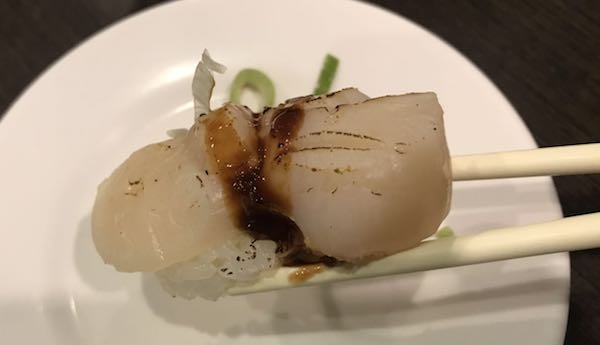
The correct method to eat nigiri is to turn the piece upside down so that the fish part is under the rice bed. Dip only the corner of the fish in soy sauce, ensuring that the rice does not come in contact with the sauce or else the grains will start falling apart.
Put the whole Nigiri inside the mouth instead of biting it and relish the taste of meat first so that you can enjoy its delicate taste before sushi rice hits your tongue. Don’t bite nigiri or keep a half-bitten piece back to the plate as it’s considered as an insult to the chef who painstakingly created a perfect form for you!
In Japan, the nigiri sushi pieces are small, bite-sized so it is possible to eat it all together. If you order nigiri outside Japan and find the pieces too big to eat at once, request the chef to serve you smaller pieces.
After eating one piece, follow up with a piece of pickled ginger to cleanse your palate and prepare yourself to enjoy another variety of nigiri sushi.
Related Questions
How To Pronounce Nigiri?
Nigiri sushi is pronounced as [ni-geer-ee-soo-shee] and nigirizushi is pronounced as [ni-geer-ee-zoo-shee].
What is the difference between nigiri sushi and sashimi?
Nigiri is a type of sushi prepared by topping a slice of raw fish or seafood (may be cooked or grilled at times) over vinegared sushi rice. Sashimi, on the other hand, is not sushi, and it only contains slices of raw fish or fresh meat (beef, horse, chicken, or frog) served on a bed of shredded daikon radish.
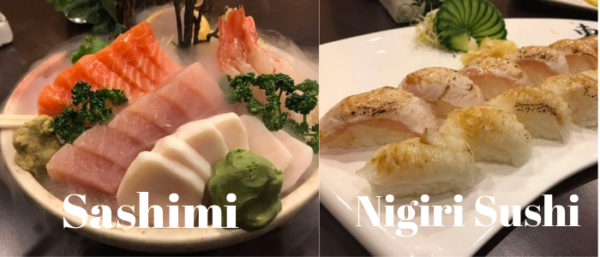
Related Article:Difference Between Nigiri, Sashimi, Sushi Roll, Hand Roll, Gunkan Sushi
Are there any vegan options for nigiri sushi?
You may use different types of vegan toppings for nigiri such as shitake mushrooms flavored with soy sauce and salt, grilled or pickled eggplant, and sliced avocado seasoned with salt.
The Final Words
Most sushi beginners find nigiri sushi a good option to begin their sushi experience. With its distinct flavor and palatable taste, it allows first-timers to develop a liking for raw fish. If you find the raw fish flavor too strong, you may start with grilled/ seared/ cooked options and then proceed to raw version.
Nigiri sushi is also simple to make and there are many traditional and non-traditional toppings to choose from. I have mentioned 28 varieties of nigiri toppings in this list but there can be many more. You are limited only by your imagination!

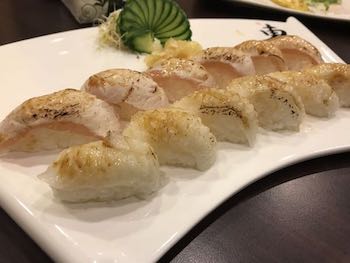
Comments
Pingback: Difference Between Nigiri, Sashimi, Sushi Roll, Hand Roll, Gunkan Sushi - Easy Homemade Sushi
Pingback: Sea Urchin Sushi: The Ultimate Guide - Easy Homemade Sushi
Pingback: Chirashi vs Sashimi Detailed explanation - Easy Homemade Sushi
Pingback: 18 Ways To Make Sushi Without A Mat - Easy Homemade Sushi
Pingback: 21 Interesting Facts About Sushi (Japanese Food)